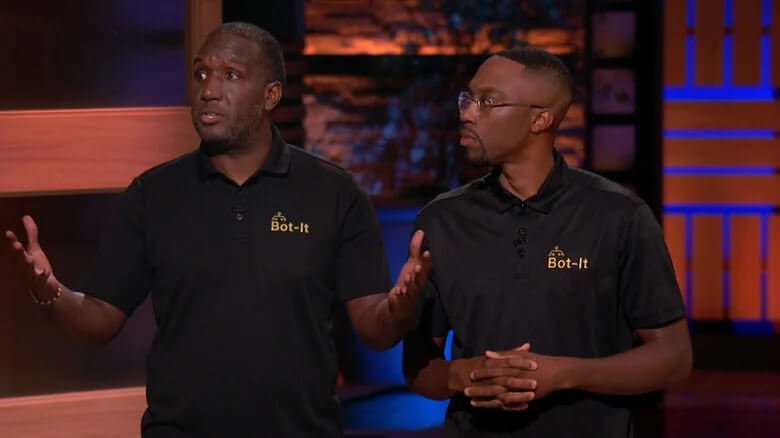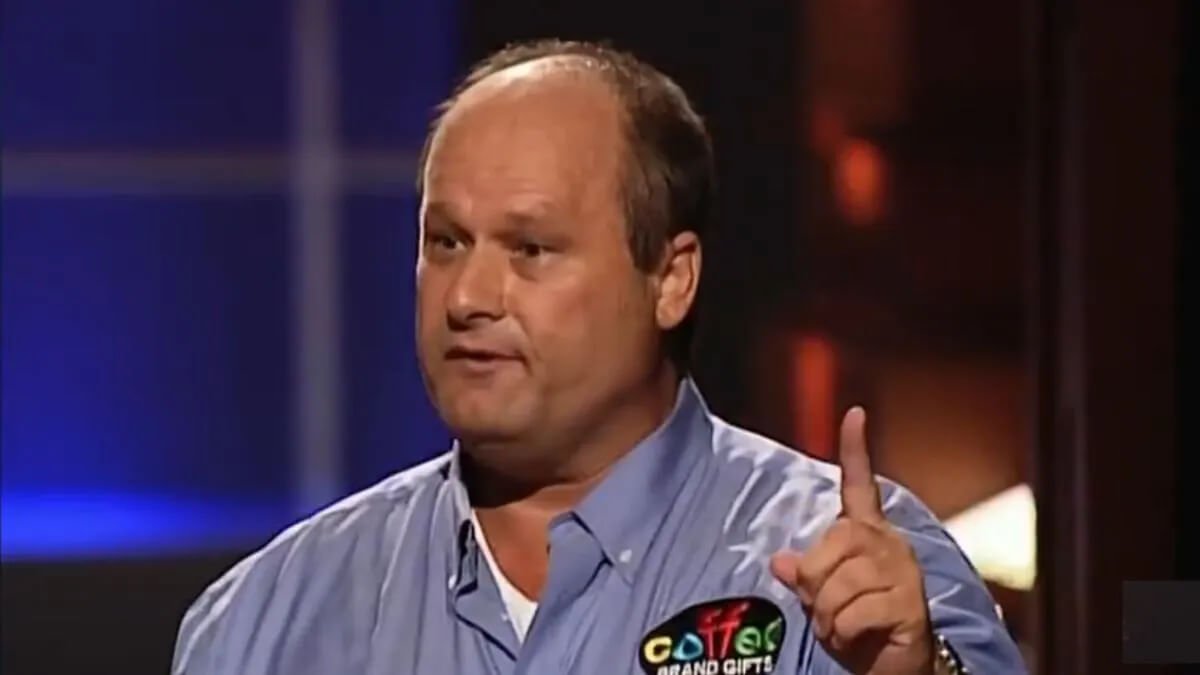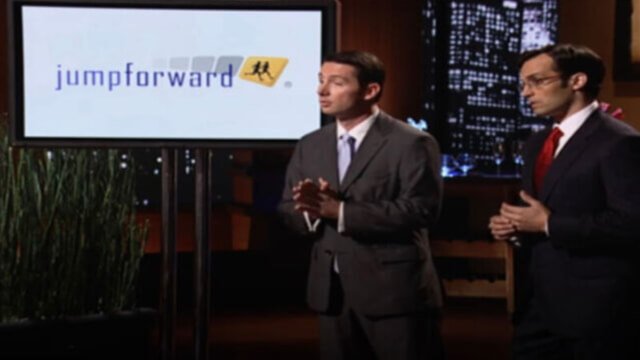You saw the confetti moment. Founders go on Shark Tank, bag a deal, and the credits roll. But real operators know—securing cash on camera is just the first round. What happens when the hype fades and it’s time to build for real? Let’s break down Bot-It’s journey from Shark Tank Season 15, Episode 3, where Maurice Bachelor and Joel Griffith flipped the script on the billionaires—and tried to automate their shot at the big leagues.
Contents
ToggleWho Are the Founders and Why Did Bot-It Make a Splash?
Start here: not all founders are built the same. Maurice Bachelor and Joel Griffith didn’t waltz into that tank with smoke and mirrors. These guys are technical, and more importantly, they know how to sell a real problem.
Bot-It entered the pitch asking for $150,000 in exchange for 10% equity, clocking themselves at a neat $1.5M valuation. Not outrageous, not desperate. That alone puts them ahead of the pack. If you’ve watched enough Shark Tank, you know—most founders either overplay their worth or come off begging. Maurice and Joel? Calm, credible, and with a pitch that made the Sharks sit up.

What Exactly Does Bot-It Do—And Who Needs It?
Forget the marketing fluff. Bot-It is an AI-powered automation tool made for regular users, not techies. Picture your grandma scoring Beyoncé tickets, snagging a hyped product drop, or getting that impossible Saturday night dinner reservation in NYC—all by setting up a simple bot, no coding, no headaches.
Think of them as the Robin Hood of bots. Instead of bots being tools for resellers and scalpers, Bot-It evens the playing field. The average consumer finally has access to automation usually dominated by companies with deep pockets or hackers sitting on their Discord servers.
It’s not the first automation platform out there. But hardly any have made it dead simple for the regular person—without risking malware or legal headaches. That’s why the Sharks listened.
Bot-It’s Shark Tank Deal: The Battle of the Billionaires
Shark Tank cliché: Battle of the Billionaires. But here, it was real. Mark Cuban jumped first, sensing a market ready to pop and founders who understood their numbers. Cuban’s initial offer? $150,000 for 20%. That’s standard ‘Shark Tax’—I’ve made similar moves myself. Always expect the first bite to demand more equity.
Meanwhile, Michael Rubin stepped in, eager for a piece of the action: $150,000 for 15%. Notice the undercut. Rubin smelled potential and wanted in at better terms, maybe flagging that these founders actually had room to negotiate.
Now, some rookie founders cave under pressure or get greedy. But Maurice and Joel knew the game. Rather than split the offers or waste time pushing back, they suggested a tag-team. Smart move. Make the two Sharks work together, double their capital, and cut your risk. Eventually, they settled on $300,000 for 30% equity. That’s still a Shark-level chunk, but for two billionaire investors in this space? As fair as it gets.
Kevin O’Leary? He bowed out, worried about the ethics of bot tech—classic Mr. Wonderful moment, but also a useful signal. The product walks a line. If you’re building in ‘gray zones,’ get your legal and ethical ducks in a row.

Net Worth and Valuation: What’s Bot-It Really Worth Post-Shark Tank?
Let’s talk money, because headlines love to hype up deals, but very few chase what happens after day one.
Bot-It’s last public valuation was $1.5 million at the time of their pitch. Post-deal, that deal closed at $1 million pre-money ($300k for 30%). Easy math, but that’s not the whole story. Here’s what really matters to business operators:
- High-value deals on Shark Tank sometimes don’t close after the fact, but this one did. Credibility goes up when you actually bank the check.
- Post-show, their user base exploded. Over 60 new paying subscribers arrived just 2 days after airing. That figure might sound small—but new SaaS sign-ups are the lifeblood for early traction.
- The platform rolled out new automation features, proving Maurice and Joel were hungry to reinvest, not coast.
While their current net worth isn’t public, let’s do founder math: SaaS like this runs on recurring revenue, sticky value, and adding new use cases fast. With two high-profile Sharks providing capital, strategy, and access, expect the valuation to trend up. Could it be $3-5 million today if growth kept rolling? Very possible, based on the usual SaaS multiples for early-stage, high-momentum tech.
You can get SharkWorth’s latest updates on Bot-It’s estimated net worth—but it’s about the growth story, not just the headline number.
Breaking Down the Subscription Plans: Do the Numbers Make Sense?
Founders love to ask themselves: Will people actually pay for this?
Here’s what Bot-It did right. They launched a Standard plan at $9.99/month—not out of reach for regular folks who want to try automation, but high enough that it’s not a race to the bottom. There are advanced tiers with added functionality, but the main thing is keeping the bottom tier accessible to non-techies who just want results.
This model works. Why? It’s the Netflix effect. If a product solves a real pain for ten bucks, people pay and forget about it, but the company racks up cash month after month. Add volume, add loyalty, and you get real SaaS scaling.
Is this the market that gives you a $100 million exit? Maybe not. But as a recurring revenue vehicle in an area where the competition mostly scares off non-developers, it’s a unique wedge.
After the Cameras: What Does Growth Really Look Like?
Look, Shark Tank bumps are real but don’t last. Many companies end up with vanity metrics and then stall.
Maurice and Joel ran the right playbook post-airing. They didn’t brag—they built. In 48 hours, over 60 fresh subscribers paid for service. Not just free signups, but actual cash customers. The team dropped new automations and kept improving the platform, not just riding a flash-in-the-pan PR wave.
Peer companies often fizzle after the on-air moment—remember all those meal kit pitches that died after QVC? Bot-It is still expanding, tightening its product, and pushing real features (not just promises) live. I rate that as a grind that pays off.
The Real Impact from Mark Cuban and Michael Rubin
This is the big advantage with the right Sharks on your side. Cuban has walked the tech and automation road for years. Rubin is a king of high-ticket commerce and sports. Both know how to build nationwide buzz and make corporate partnerships happen.
Did they just write checks? No. They opened their networks and made introductions you can’t buy with a Facebook ad.
Maurice Bachelor said working with both was great—the kind of founder comment that means they’re actually getting hands-on help. That’s rare in Shark Tank land, where some investors only show up when cameras are rolling. Here, the involvement is real.
Challenges That Could Bite Back: Hard Questions and Pushback
Every pitch worth a damn faces tough questions. Here’s what tripped up some Sharks—and what could still bite Bot-It.
Kevin O’Leary opted out over the ethical gray area. Say what you will about his PR play, but he’s not wrong. Automation comes with risks: platforms could ban users, or sites may fight back with anti-bot protection. For Bot-It, the mission is keeping automation user-friendly without crossing legal or ethical lines.
Barbara Corcoran and Lori Greiner passed. Reason? They believed the founders and the idea had legs—but it wasn’t their domain. That’s fair. No hard feelings.
Competition is also a real challenge. Other bot-building tools serve professionals. The question is, can Bot-It keep the interface simple, legal, and accessible while others try to race to the bottom on price or pack in features that only developers need?
If they pivot into the wrong customer segment or overcomplicate the platform, churn will spike, and regular folks will run for the exits.
Bottom Line: Is Bot-It Built for the Long Haul?
So, is Bot-It more than a flash in the pan? Here’s the thing—I’ve seen plenty of founders take Shark money, boost their ego, then vanish in six months. Maurice and Joel aren’t playing that game. They did what serious entrepreneurs do: snag smart money, lock in value clients, and build new features in response to feedback.
With Mark Cuban and Michael Rubin riding shotgun, they’re not alone on an island. The fact that Bot-It is still rolling, stacking paying users, and getting product right puts them in rare company.
Are there landmines ahead? You bet. But these founders knew when to split equity, when to stay true to a mainstream userbase, and when to ask for real operator advice. That’s why, according to the industry sources like SharkWorth, Bot-It sits in a stronger spot now than ever before.
If you want to see what solid SaaS hustle looks like, keep your eyes on these guys. They’re not just riding the Shark Tank bump—they’re building for the next level.
FAQs
Is Bot-It from Shark Tank still in business?
Yes, Bot-It is still operating, growing its user base, and adding features well after the Shark Tank episode.
Did the deal with Mark Cuban and Michael Rubin officially close?
The deal was closed, and both Sharks remain involved, boosting Bot-It beyond just writing checks.
How much did Bot-It grow after Shark Tank aired?
Over 60 paid subscriptions came in within 48 hours of airing, with ongoing growth and new automation features launched.
What’s the current net worth or valuation of Bot-It?
No public numbers, but the original on-air valuation was $1.5M. The company has likely grown beyond that, according to SharkWorth.
Who is the target customer for Bot-It?
Everyday consumers who want automation for online reservations, ticket drops, and deals—no tech expertise required.
Are there legal risks with using Bot-It’s automation services?
Potentially—some sites frown on automation. Bot-It is designed to keep usage within safe, user-friendly bounds.
What features set Bot-It apart from other platforms?
Simplicity and accessibility. No coding needed, and automation is tailored for non-technical users after real-world results.
Can non-tech users get value from Bot-It, or is it only for pros?
Absolutely. The whole point is to give automation power to regular folks—set it, forget it, and win online.
Looking for the real founder playbook and not just TV drama? Take notes from the Bot-It crew. Hustle, smart negotiation, keep it legal, and make life easier for your customers. That, not just a Shark deal, is what keeps you winning after the cameras shut off.










